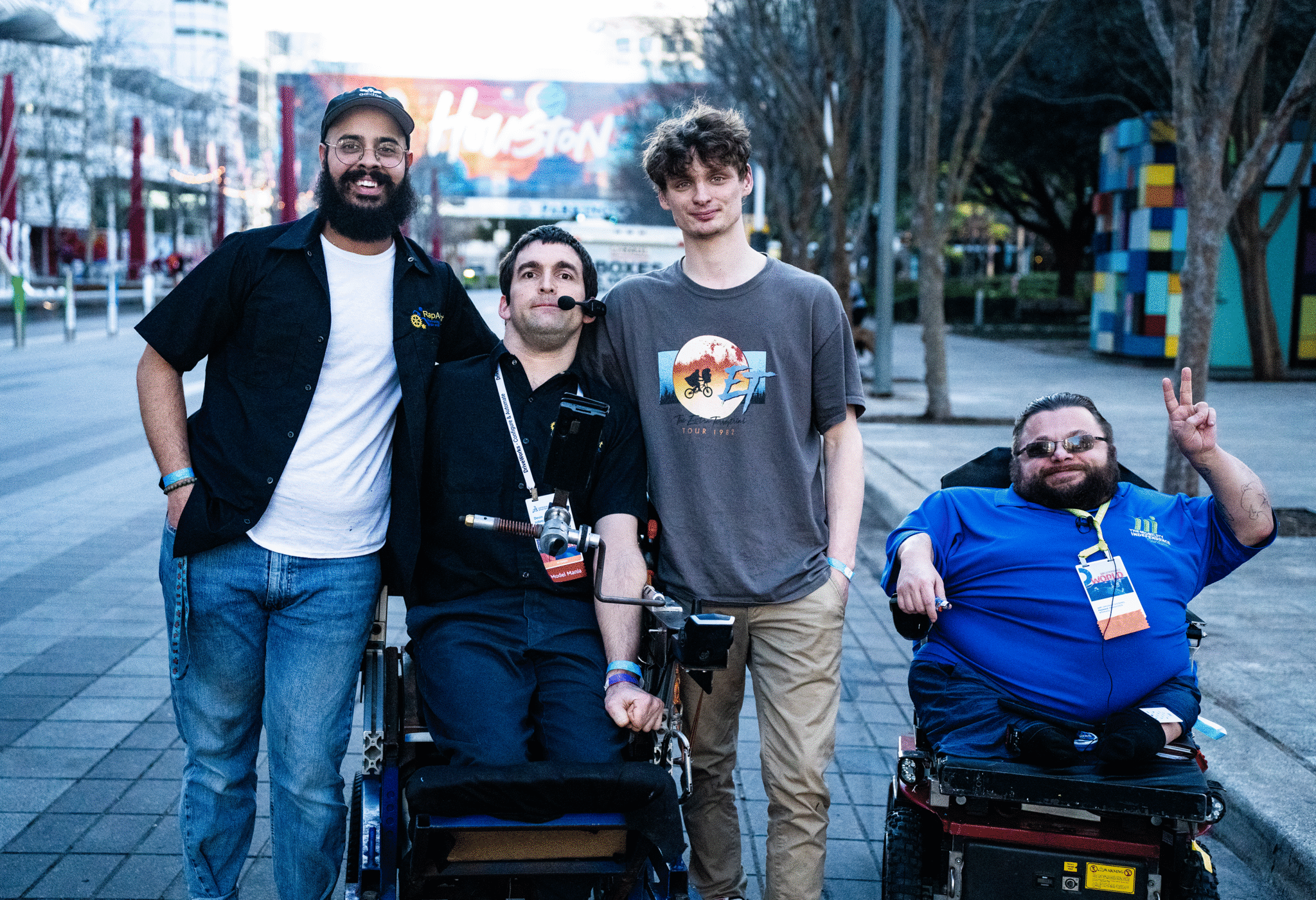“It just isn’t fair,” she thought, looking up at her children. Dawn Gast was on a trip in downtown Chicago with the three youngest of her seven children. While crossing busy Michigan Avenue, she tripped in the middle of the street and was bleeding with her children aged 5, 7 and 9 looking down at her. That was the point when the progression of Multiple Sclerosis (MS) was interfering with her life.

As a mother of seven children and full time volunteer, Dawn doesn’t have time for MS to get in the way. But the symptoms were looming. She started to feel more fatigue, but what active mother is not fatigued occasionally? She made excuses for the symptoms of MS, but in the back of her mind, she knew what they were. Her own mother has MS and she has witnessed the signs of the disease first hand. MS does not suddenly appear but slowing creeps into your life with initial signs of muscle weakness, reduced coordination or blurred vision. Dawn chose to ignore the symptoms and make excuses from her busy lifestyle until she couldn’t ignore it any more.
The Insidious Progression of Multiple Sclerosis
Multiple Sclerosis (MS) is a progressive immune disease attacking the central nervous system including the brain, spinal cord and optic nerve. The disease impacts the myelin sheath of the spinal cord. Once any part is damaged, then nerve impulses are disrupted when traveling to and from the brain or along the spinal cord. This results in a variety of symptoms that can be unpredictable and may change on a daily basis or become permanent. Symptoms are not uniform among the more than 2 million people worldwide living with the disease. MS can be difficult to diagnose; however the use of MRI (magnetic resonance imaging) is the best tool to detect the disease in the human nervous system.

For Dawn, the main symptoms began on a trip to Clemson University with her family. Her recognition of the symptoms promoted her to seek resources to learn about the disease including the National Multiple Sclerosis Society and the Mayo Clinic. Being properly diagnosed with the disease was not as simple as an internet search. After extensive testing and several physician visits, she received a call confirming her suspicions. Dawn was diagnosed with Multiple Sclerosis.
At first she overcame the symptoms by pure willpower. As Dawn’s mobility got worse and worse, she had to compensate for her poor balance. She would hold onto the stroller or to her husband’s hand. Her balance got progressively worse and she started to fall more and more. Until the moment when she was looking up at her children on Michigan Avenue in Chicago, it was seven months after her diagnosis and Dawn knew at that point she was not safe to walk. Something needed to be done and there had to be another way.
Electronic Stimulation to the Rescue!
She tried a variety of options to keep her mobility and avoid the use of a cane, walker and even a wheelchair. The options were unsuccessful until her physical therapist introduced her to a drop foot stimulation device. Drop foot stimulation is a neural prosthetic worn on the outside of the body and is designed to improve the user’s gait process.
It consists of a cuff with impended electrodes that is placed on the upper calf muscles. It also has a heel sensor; which is placed in the shoe and a pocket control unit. Common among people living with MS or stroke survivors, drop foot syndrome is not a disease but a symptom of a condition. It is a gait abnormality in which the forefoot cannot be lifted in the gait process due to muscle weakness or paralysis. Drop foot stimulation helps the user overcome this syndrome by using electrical current to stimulation the muscle. As the user attempts to lift the foot, the heel sensor activates the electrical stimulation to contract the calf muscle to lift the forefoot. This coordinated process is controlled by the neural prosthetic to improve walking and reducing the effort in mobility.
Read more about Dawn’s story and how the technology is impacting her life in the book, Bionic Pioneers, or visit NeurotechNetwork.org. Neurotech Network also offers a free fact sheet page about neurotechnology for multiple sclerosis.
About the author:
Injured but active, Jennifer French acquired her C6-7 incomplete spinal cord injury in 1998. She is an active user of a neural prosthetic system and is the first woman to receive the implanted Stand and Transfer system. Jen is a silver medalist in the sport of sailing at the 2012 Paralympic Games and is the 2012 Yachtswoman of the Year; the first woman with a disability to do so. Her story is published in her book, On My Feet Again: My Journey out of the Wheelchair using Neurotechnology. Jen is also the Co-founder and Executive Director of a 501(c)(3) non-profit organization, Neurotech Network. The organization’s focus is to educate and advocate to and for persons with impairments, their caregivers and health care professionals regarding neurotechnology. For more, visit www.NeurotechNetwork.org.





